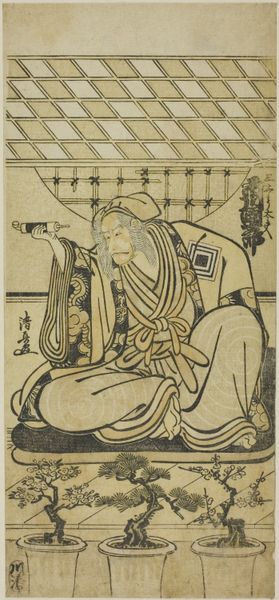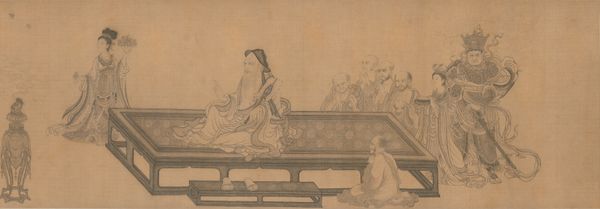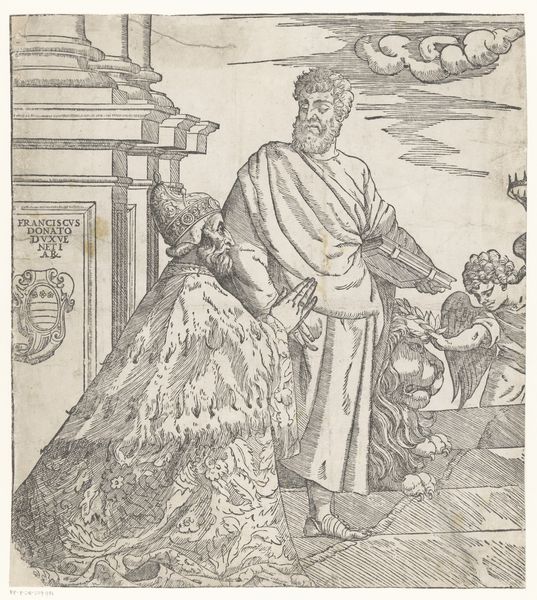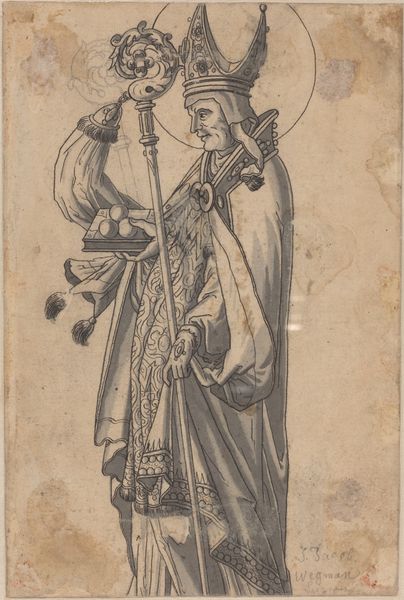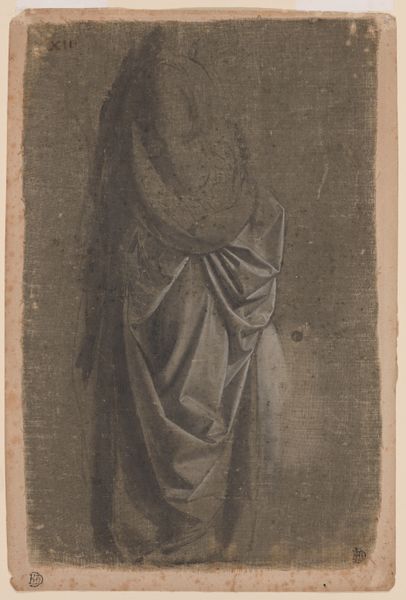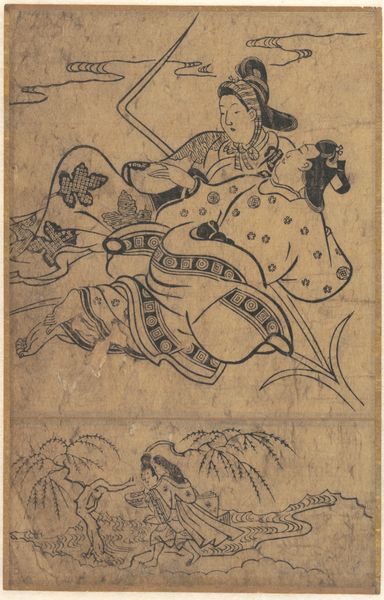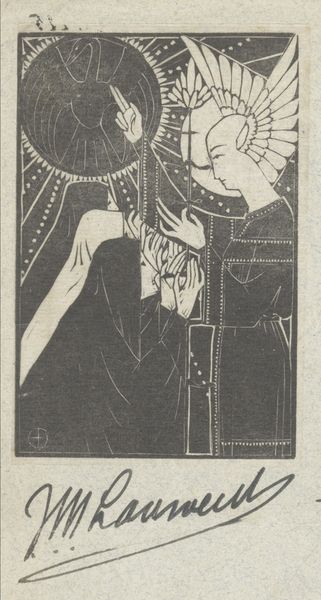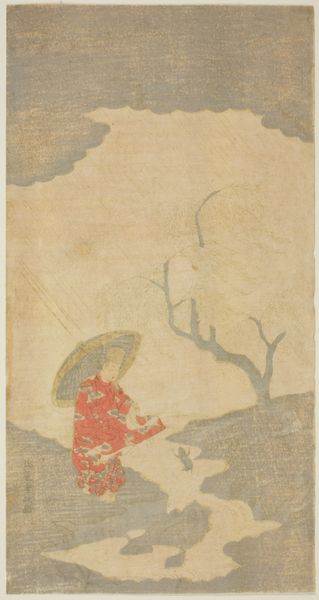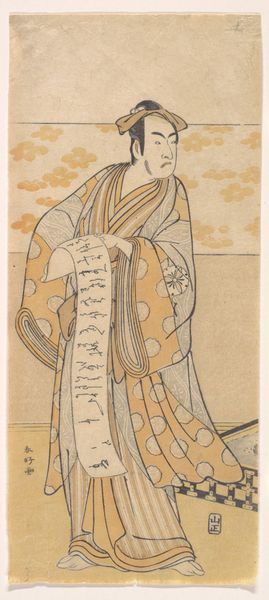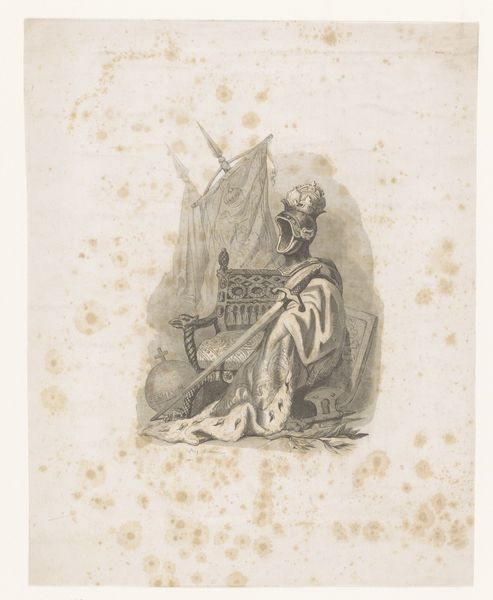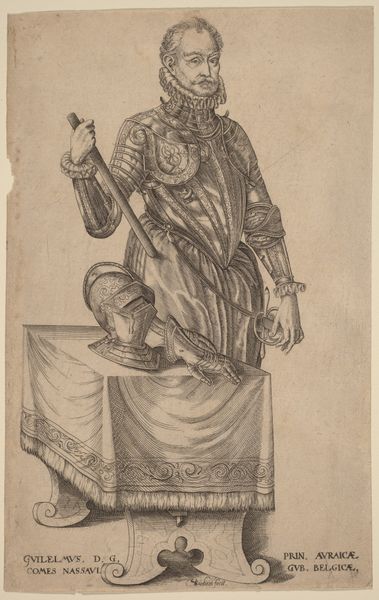
Fille Turque, jouant du Canon, plate 50 from "Recueil de cent estampes représentent differentes nations du Levant" 1714 - 1715
0:00
0:00
drawing, print, engraving
#
portrait
#
drawing
# print
#
orientalism
#
islamic-art
#
genre-painting
#
engraving
Dimensions: Sheet: 16 7/16 × 12 1/8 in. (41.8 × 30.8 cm) Plate: 14 1/8 × 9 7/8 in. (35.8 × 25.1 cm)
Copyright: Public Domain
Curator: This engraving, titled "Fille Turque, jouant du Canon" or "Turkish Girl Playing the Qanun," is part of Jean Baptiste Vanmour's "Recueil de cent estampes représentant différentes nations du Levant," dating from around 1714-1715. Editor: There's such an ethereal quality to it. It's almost ghostly, like peering into someone's memory of a dream, isn't it? The stillness of the figure contrasts with what must have been a vibrant musical setting. I imagine hearing that Qanun music rippling in the air. Curator: Vanmour was commissioned by the French ambassador to the Ottoman court, and his works are important visual documents of the Ottoman Empire during the early 18th century. They reflect a growing European fascination with the "Orient," influencing perceptions and artistic trends for decades to come. We should also acknowledge how the exoticism it implies affects a work like this one. Editor: It does romanticize a certain otherness, doesn’t it? It's a reminder that beauty is often framed by the viewer’s lens, perhaps colored with biases. But, oh, the intricacy in her garments! The fabric seems almost alive with subtle designs and layers of depth. She's captivatingly beautiful—her tranquil focus seems almost hypnotic. The engraver does an outstanding job with such delicate work. Curator: Absolutely. These engravings were circulated widely across Europe, thus perpetuating—and often misrepresenting—Ottoman culture and society. The instrument itself, the Qanun, suggests cultural exchange, but within a context of power dynamics and unequal representation. The music of otherness that you imagine may have in it harmonies that reflect this exchange in complicated and sometimes troubling ways. Editor: That's a good note to sound. Despite everything, it is difficult not to marvel at the craft. In this case the engraver's effort is what gives "voice" to Vanmour's imagining, itself an interpretation filtered through a very particular, external view. The textures, the soft gradations… it's just exquisite. There's a yearning quality that draws me to it—even if that yearning is born of misrepresentation, in that gap something human resides. Curator: Precisely. And by recognizing these inherent complexities, we come to better understanding this particular image. Editor: Ultimately, art invites dialogue—across cultures, across time. Doesn’t it make you wonder about her story, the woman with the instrument?
Comments
No comments
Be the first to comment and join the conversation on the ultimate creative platform.

